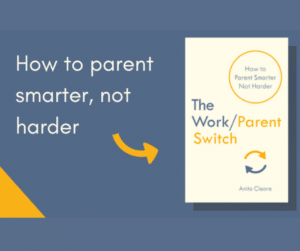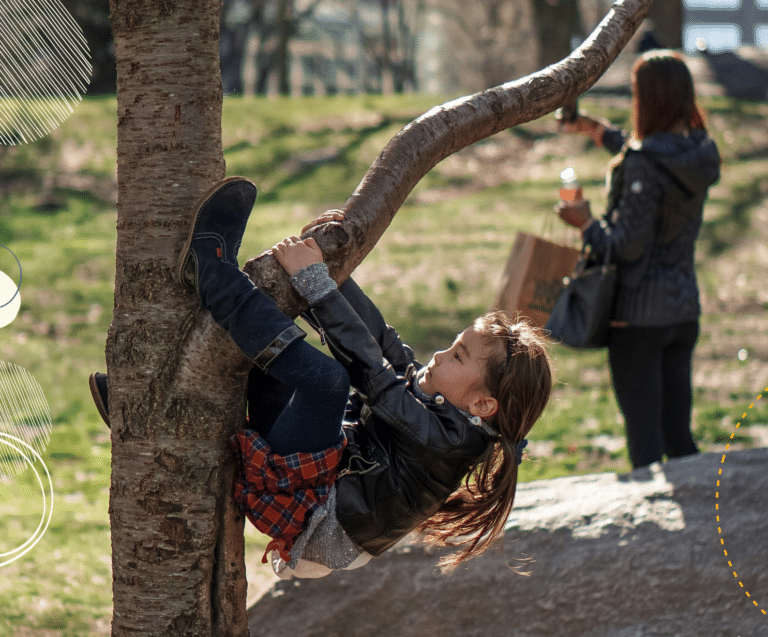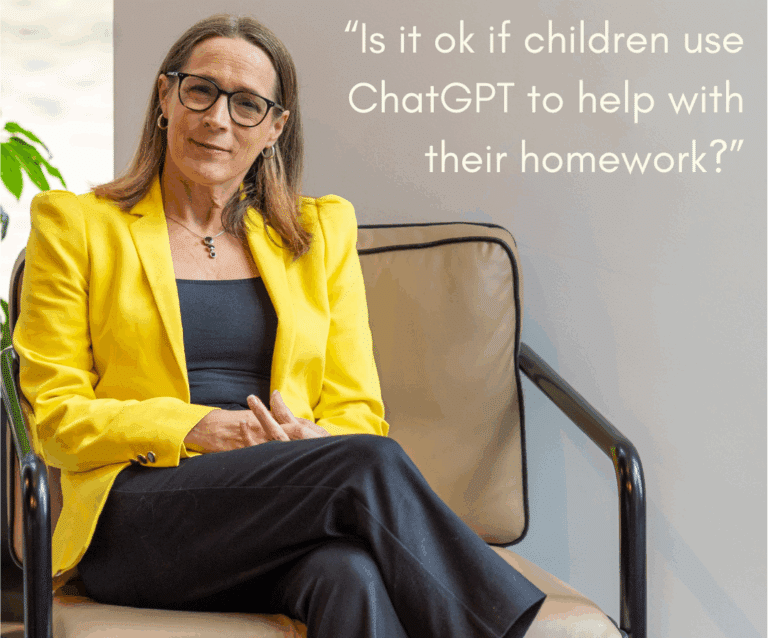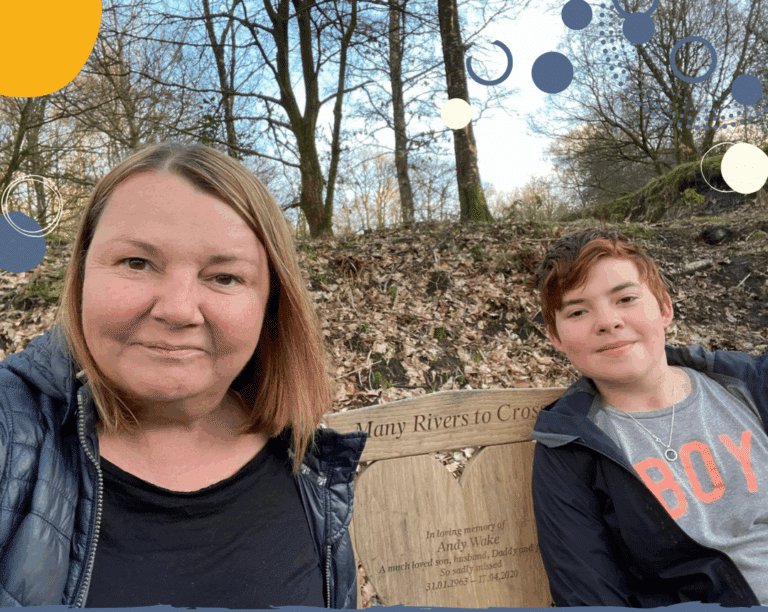Why risky play is important
Risky play is important for the development of children’s knowledge, skills, self-esteem, resilience and attitude to learning. It is a vital ingredient for growing healthy and happy children.
However, even when we recognise that risky play is important, modern parents often encounter lots of barriers to incorporating this type of play into children’s daily life. I hope, by the end of this article, you will have a better understanding of:
- what risky play is
- why risky play is important
- what gets in the way of risky play
- how to go about making more risky play happen in your child’s life
What is risky play?
In essence, risky play is any type of play that involves uncertainty due to perceived risks. Often, risky play happens when children are right at the edge of their competence, doing something difficult or doing something that feels a little dangerous. For a toddler, that might be climbing the ladder to the slide all by themselves (without being lifted or held by a parent). For an older child, it might be scrambling across rocks or climbing a tree. For a teen, it might mean going to the park or pool with their friends (without a parent).
Often, risky play is experienced by children as thrilling or exciting. Sometimes, there are no actual significant risks involved, only perceived ones – for example, on a climbing wall or high ropes course where children are securely tied on to prevent them falling.
Why risky play is important
Risky play is important because it helps children to extend their skills and competence by tackling an activity which is challenging. Children get good at what they practise. By taking on a challenging activity, they lay down new pathways in their brains and extend their understanding of the world and of themselves. Risky play helps children learn how to manage their bodies and navigate the world.
When children succeed at a task which is difficult or risky, children also experience a sense of success and competence. This plays an important role in building children’s self-esteem.
In order to develop healthy self-esteem, children need lots of opportunities to feel proud of themselves. Risky play provides lots of opportunity for these moments to shine – those little moments of triumph that happen when children succeed at doing something difficult or they get a little bit better at doing something they couldn’t do before – when they feel a sense of mastery and effectiveness and often receive praise or admiration from people around them too.
And because risky play often involves an element of potential failure or jeopardy, it teaches children how to approach challenges positively and overcome setbacks, promoting a growth mindset and boosting their resilience.
What gets in the way of risky play?
We are a risk-averse generation of parents. We have higher expectations (and more information and guidance) about keeping children safe from harm. We are also a generation of parents who judge our own perceived failures as parents harshly. By avoiding risks, we avoid perceived failures as a parent, as well keeping children safe.
We are also a generation of parents who work. We are time-poor and often short on energy. Young children spend more time under the care of professionals such as nannies, nurseries and schools – and professionals have even more reasons (and regulations) for keeping children away from any risk of harm.
Our social view of children’s development has shifted away from the idea that if we let children get on with things, then they will learn everything they need to know and effectively bring themselves up, and towards a view of parents and professionals as primary in driving children’s learning and development. Whereas in the past, children had lots of room to roam and engage in independent free play, nowadays we take our children to specialist places to ‘do’ play – to soft play centres, play parks and theme parks. We curate their learning for them.
And, of course, we are living in a digital age. Children have access to mobile technology to entertain them at the push of a button and take away the boredom that might otherwise lead them towards risky play or to invent new games and challenges.
What happens when children don’t do risky play?
According to Jonathan Haidt (in his book The Anxious Generation*), risky play is important because it helps children say in ‘discover mode’ and remain ‘antifragile’. He directly links the increased use of digital devices during childhood and the decline in children’s play opportunities to increasing rates of anxiety and decreasing mental health among children and young people.
Not all experts agree with Haidt’s conclusions, and many would locate the causes of children’s declining mental health in a wider range of factors than just smartphones.
However, we know that avoidance of things that make us fearful or worried increases anxiety levels over the long term. It doesn’t seems farfetched, therefore, to conclude that fewer opportunities to experience risk within play – and to get familiar with uncomfortable anxious feelings (and to find ways to manage or overcome these) – is likely to contribute to poorer mechanisms for managing anxious feelings in the longer term.
Actions parents can take to promote risky play
Allow your child to take age-appropriate risks in real world play and recreation. Challenge yourself to step back a little and provide the minimum support required to keep them safe, not the maximum. That might mean hovering as your toddler climbs that ladder to the slide just close enough to catch them if they fall for the first few times – but then taking a step back as they gain competence in this new skill.
Put firm boundaries around screens. Don’t aim to take away your child’s boredom. Boredom is good for children. It is the rocket fuel behind children’s development. Tackle your own tolerance for disruption and mess to ensure your home and daily routine provides lots of opportunities for independent free play without technology.
Teach children how to keep themselves safe. Adult supervision is never a 100% safety net. Children need to be aware of risks and how to manage them (and practise responding to risks). Children are much safer if we talk to them about ‘what to do if’ than if we try to keep them in a bubble and eliminate all the ifs.
Allow children to learn through mistakes without always rescuing them. Play is a fantastic context for children to learn a positive attitude towards failure and develop the strategies and mindset for bouncing back and trying again – so involve them in lots of activities where they won’t get it right first time. Aim for a family culture in which failure is celebrated as part of learning.
Accept the uncomfortable feelings that come with allowing children to face risks. This is complex – it means reframing your understanding of parenting not as a project you are managing (with outcomes you can control) but as a journey of discovery that you are travelling with your child (in which difficult things can happen). Aim to be a resilient parent, not an all-controlling one.
Manage your own worries. Your job is not to protect your child from difficult situations, it is to help them encounter those challenges in a supported way. It’s uncomfortable for parents when our children struggle with something – but your child needs to encounter risks and to experience discomfort in order to become the brave, competent and confident person you want them to be.
Understand that risky play is important but not sure how to implement it? Try out these play ideas:
- Activities to build children’s confidence
- 10 Things to do this summer to boost your children’s resilience
- Fun family adventures for tweens & teens
- 20 low tech family time ideas
- Books to inspire children to be adventurous
- Play ideas for busy parents
*This post contains affiliate links. That means that if you click through from this post and buy a book, the Positive Parenting Project will receive a small commission. There is no additional charge to you. This helps us to keep providing free content for our readers. For more info, see Disclosure Notice.









Leave a Reply